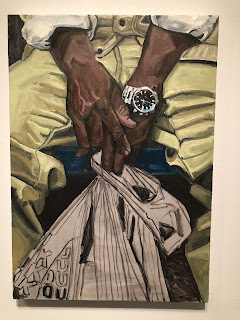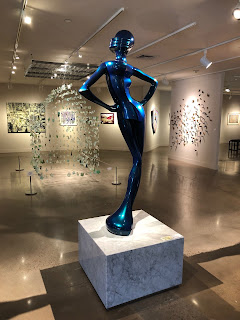"I went to the wrong college."
It was never even a doubt that I was going to attend the University of Illinois at Urbana-Champaign because I'd been going to football games with my dad there for years, and my mom went there, and for a high achieving student at a small little Catholic school in southern Illinois, the U of I was pretty much the obvious choice. Just me and about 36,000 students (though it has now just passed 50K).
In reality I should have gone to a small liberal arts school where I wouldn't have become lost amidst all the distractions. I should have gone to Wash-U in St. Louis or perhaps Northwestern or definitely Miami of Ohio, though I'm probably overestimating my brain and credentials. For, even going to a school like DePauw in Indiana, where I had a potential opportunity to keep playing soccer, would have been a really good fit for me. A small school with smaller classes and, perhaps, a better opportunity at a more cohesive sense of community might have kept me more focused on the reason we go to universities - educating ourselves. After being a straight A student my entire life, I graduated from my program in secondary education with a none-too-impressive 2.9 GPA. Yep, I went to the wrong college.
In a place like the U of I, it was too easy to get lost and pursue anything but an education. For example, at Illinois my mandatory government class, Poli-Sci 150, was held in Folinger Auditorium -- just me, the professor, and 1500 classmates. I attended that class approximately five times. Clearly attendance wasn't mandatory, the professor wrote the book and study guide, from which he directly lectured, and my discussion section with the grad student TA at the end of the week was less-than-engaging (though I'd put that on me as much as he). So, I bought the study guide, took the mid-term and final, turned in a paper that I had written for my government class during my sophomore year of high school ... and got a B. That experience -- and showing up late to a final in educational psychology because I was driving back from a Grateful Dead show the night before in Milwaukee -- reflects most of my undergraduate experience.
Yet, I should neither complain nor lament my experience in college. I went to the wrong college, though it turned out to be the right one because that is where I met my wife. Julie and I have been married twenty-two years, have two wonderful children who absolutely amaze and impress and inspire me, and we live just outside of Denver, where I work at and my children attend one of the top high schools in the country. They are the loves of my life, and my career is so satisfying that I often marvel as I walk to school about how exactly I got here. Julie and I met in Speech Com 141, where I thought she was a flighty sorority girl, and she thought I was a disengaged loner, neither was remotely close to true, as she wasn't even in the Greek system and is the furthest thing from flighty, and I happened to be in one of the largest fraternities on campus. Funny how that goes.
I think a lot about college and career choices and how we end up where and who we are as adults, and I try to share some insight with the many students I encounter and the many parents who ask about these things. In terms of colleges, there is not just one, but dozens if not hundreds of options for students. And, in all honesty there is no perfect fit. Nor is the place we choose to study for four years the primary determining factor in the rest of our lives, a reality that was adroitly explained by columnist Nicholas Kristoff in his book
Where You Go is not Who You'll Be: an Antidote to the College Admissions Mania. I'm sure I would have had a much richer educational experience at a small college, but it's not all about the classes and the grades. I met so many interesting people at the U of I, all of whom were influential in who I've become. And, granted, much of who I've become was set by who I already was
at the age of two or three. Perhaps those qualities are what enabled me to connect with my wife who became the most important influence in my education and personal growth into the adult, husband, father, neighbor, and friend I am. I still recall a roommate telling me after Julie and I had been dating a while -- "She's good for you, Michael. She softens your edges." Oh, how true.
From that initial class together to a few more, a beautiful friendship developed over the next couple years, though neither of us was remotely aware that we would end up married. Interesting to note, many of our friends seemed to know long before we did. That's apparently not an unusual story. So, as it goes, we started dating a few weeks before graduation, moved abroad together to teach English and see the world for five years after graduation, and have been living happily together for nearly three decades.
So, I went to the wrong college. And, at risk of offending the literary types who will groan and roll their eyes as I appropriate and over-interpret the words of Robert Frost, I went to the wrong college "... that has made all the difference."










